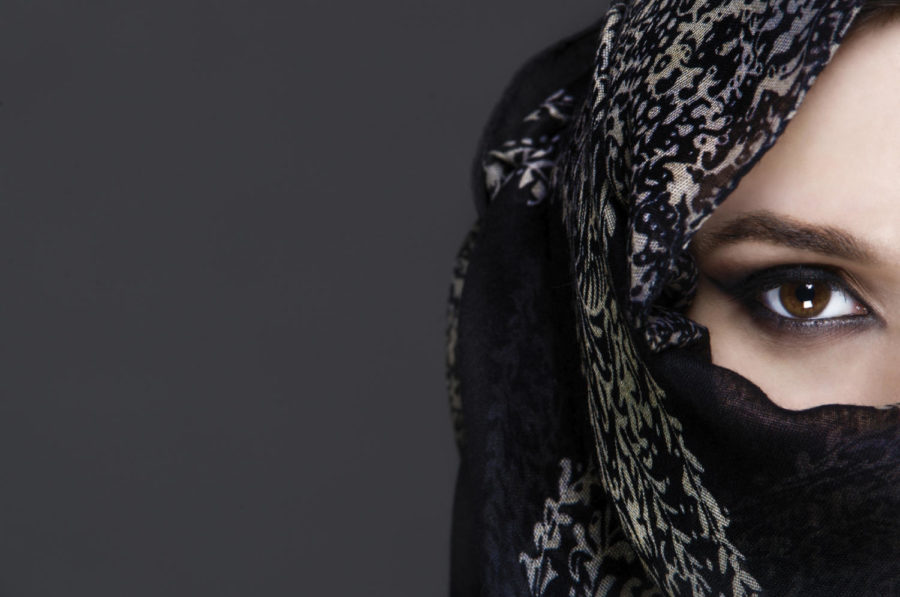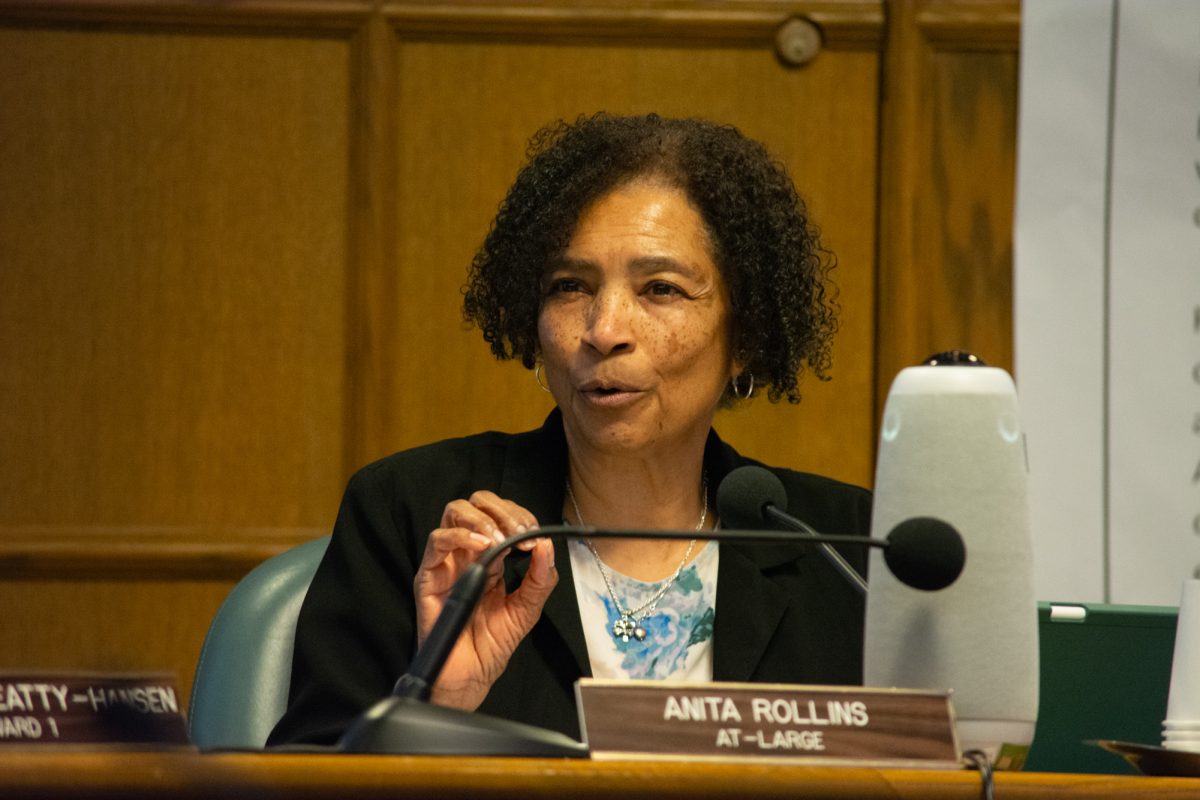Keeping covered: Hijabs offer sense of empowerment for women who wear them
Hijab
March 11, 2016
A small, metal butterfly pin sits snug on her left shoulder, piercing through the peach fabric. Pink gemstones fill the wings and body of the butterfly, providing a subtle accent. Two other similar pins rest in the fabric, one hanging below her chin while the other keeps hidden under a layer of fabric on her right shoulder.
For Ibtisam Ostham, senior in electrical engineering, this square piece of fabric — her hijab — keeps her protected and is a symbol of her devotion to God.
Ostham began wearing her hijab when she was 9 years old, although she would often still take it off while at home or playing with friends. By the time she hit 13, she had made the decision to cover her body permanently. Ostham said she was encouraged by her mother to wear a hijab, but the decision was ultimately Ostham’s to make.
Both her mother and younger sister wear a hijab, as well as many other members of her extended family, all of whom live back home in Malaysia. She has not been home for two years.
“At first it comes naturally because all of the people around me were wearing a hijab,” Ostham said.
Today, her hijab is wrapped in what she describes as the most simple way she knows how. She is just attending class, which warrants no extravagant wrapping or ornamentation. She owns more than 20 different hijabs, all of which consist of different colors, fabrics and sizes. The only skin that shows is on her face and her palms.
She said she easily sticks out in her program in electrical engineering. Not only is she a woman in a male-dominated program, but her hijab makes her even more easy to spot in a crowd. She isn’t the type to skip class, but this gives her all the more reason not to.
“By the end of my first semester, I was getting used to it and I was feeling like I wasn’t doing anything wrong, so why would I be scared?” Ostham said. “The way people talk about Muslims in the media is not who I am. I feel free now and very comfortable.”
***
Black fringe hangs from the bottom of her navy hijab and brushes along the front of her shirt. It is one of her favorites, a gift from her aunt. A magenta floral pattern creeps up the back of the shawl but stops midway before reaching her shoulders. Sometimes she looks up hijab tutorials on YouTube to try out a different style, but not today.
Ras Atiqah Mohd Rosli, senior in economics, is the youngest child in her family and is no stranger to being far from home.
She transferred to Iowa State three years ago from her home in Malaysia, but has been away from her family since she was 13. Rosli left home at age 13 to attend a boarding school located five hours away from home for the next five years. After that, she spent the next two years doing college preparation three hours away from home.
It is a habit for her to Skype her parents once a week because it provides her with what she calls her “weekly dose of motivation.” Each week they leave her with the same message — “Take care of yourself and don’t walk home alone at night.”
“Regarding the Islamophobia, it gives me fear when I’m wearing the hijab because people will know right away that you’re Muslim,” Rosli said. “But I’m very grateful because I’ve never really experienced that here.”
She currently serves as the president of the International Student Council and dreams of going to work for the U.N. in the future.
For Rosli, wearing a hijab is a sign that she has submitted herself to God and her religion. Not only that, but keeping covered is a sign of modesty.
“One belief is that if we cover our body, the men will actually lower their gaze,” Rosli said. “One of the ways to avoid men from having sexual attraction toward you is to cover yourself.”
But Rosli can’t recall the first day she began wearing a hijab. It was not significant, just another day, but she does remember finally making the decision. 13-year-old Rosli was not pressured by her family or school, but knew the decision she would make would be a permanent one.
Students sometimes tell others they wish they could tell these women that they don’t have to keep covered when they come to the United States, said Christopher Chase, senior lecturer in philosophy and religious studies.
“In cases like that, I flip it around and [tell them] to put yourself in her position,” Chase said. “You’re in public and a strange man walks up to you and says that because of where you live, you should start taking off your clothes. Is that going to sound liberating? Is that going to respect her?”
After talking with many women, Chase said he believes wearing a hijab is actually very liberating and empowering to these women.
***
The excess fabric wrapped around her head plunges beneath the neckline of her shirt. Sprinkled throughout the fabric is a metallic silver floral print.
Ghinwa Alameen aims for comfort, not fashion.
Alameen is from Syria and teaches Arabic at Iowa State as a lecturer in world languages and cultures. Before coming to the United States, Alameen taught in Syria and is now in her 18th year of teaching.
She began wearing her hijab during high school. When she told her parents, they encouraged her to take a while to think through her decision, as it was a big decision for a young girl to make. Alameen stressed that the decision to wear a hijab is a very personal one for every woman.
Before moving to the United States in 2005, she said she had a lot of concerns about the way she would be treated.
“When I came here and all you know about the United States is what you hear on the news,” Alameen said. “It was the post-9/11 world then, so you would hear a lot of stories about how it was hard to be a woman in the United States who was covered.”
After living in Iowa for a few years, she said those fears faded away. Although students still sometimes ask her about her hijab, she said she finds that younger children are often the ones with questions to ask.
“When I look at the world, I just see it the way everybody else does,” Alameen said. “If you’re wearing a hijab, it’s just like you’re wearing a hat or pants. It’s really just another piece of clothing. It doesn’t restrict you in any way.”







